LENS
Give Her Props
Making illusions reality at NYC's Signature Theatre
Cassie Dorland transforms the vision of directors and scenic designers into reality by designing, constructing, reshaping or buying props. Her work and that of her team is highlighted in color in the photos below. As an undergraduate, Dorland designed the backdrop for Picasso at the Lapin Agile at Case Western Reserve. The other photos are from Signature Theatre productions.
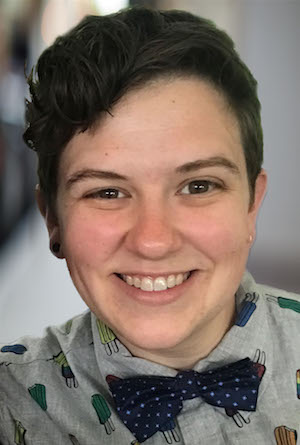 Cassie Dorland
Cassie Dorland
Cassie Dorland (CWR '10) has an unusual internet search history. She jokes that she's probably on national security watch lists because she's often Googling questions such as "How do you kill a chicken?" or "What kind of gun is appropriate for World War II?"
That's because, as props master for New York City's Signature Theatre, she's in charge of creating illusions that make the action at the award-winning off-Broadway theater look real. Every time a character fires a gun, breaks a heel at a crucial moment or dies in a pool of bright red blood, Dorland and her team have spent hours and hours creating the effect.
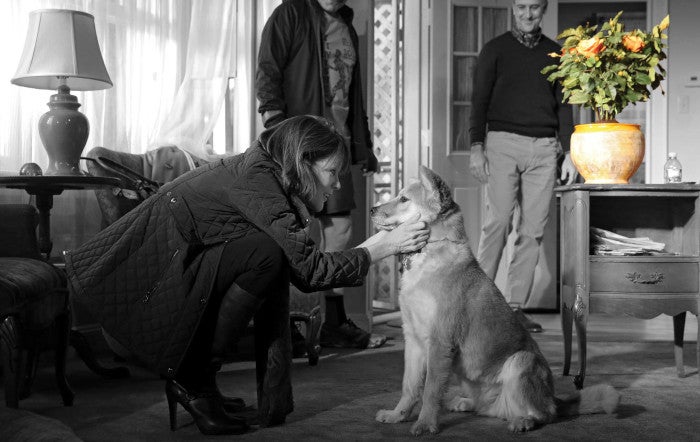 PHOTO: Joan Marcus
PHOTO: Joan MarcusThe cast of Will Eno's The Open House.
Dorland, who grew up in Papillion, Nebraska, was exposed to the magic of stagecraft in high school, when she auditioned for a play but was assigned to the technical crew. "The director pegged me as a techie right away," Dorland said.
At Case Western Reserve, she initially double majored in chemistry and theater, balancing long hours in labs with late nights building sets for university and local theater productions. Eventually, the lure of the stage won out and she dropped her chemistry major. For her thesis, Dorland created a backdrop for the play Picasso at the Lapin Agile that contained a hidden image only visible in certain light (see production photo below). When the effect was revealed, the opening-night audience burst into applause.
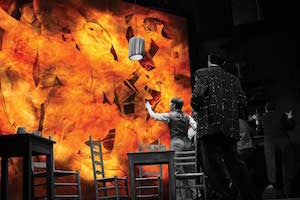 PHOTO: Jeffrey Mann
PHOTO: Jeffrey MannStephen Berg (CWR '11), left, and James Tomola (CWR '10) in Steve Martin's Picasso at the Lapin Agile.
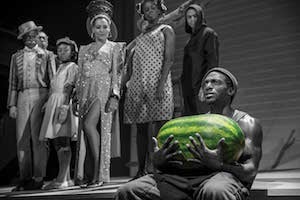 PHOTO: Joan Marcus
PHOTO: Joan MarcusThe cast of Suzan-Lori Parks' The Death of the Last Black Man in the Whole Entire World AKA the Negro Book of the Dead.
As props master for Signature since 2015, she's applied her science background to challenges such as creating 98 human-looking heads for the play Venus, transforming a sheet of suede into human skin drying on a laundry line for A Particle of Dread and building a wireless, remote-controlled potted bush for The Open House that arrived on stage as a plain green plant and then subtly bloomed with five orange roses over about 20 minutes.
 PHOTO: Joan Marcus
PHOTO: Joan MarcusThe cast of Quiara Alegría Hudes' Daphne's Dive.
 PHOTO: Matthew Murphy
PHOTO: Matthew MurphyJason Kolotouros in Sam Shepard's A Particle of Dread.
And then there's stage blood. Her favorite homemade recipe involves chocolate syrup, red food coloring and Tide laundry detergent. For the play In the Blood, she built a pump under the stage to push fake blood through the floorboards. The effect worked, but because the stage was tilted, the mixture spread and didn't produce the desired perfect puddle. "It's a fun challenge when someone wants something that won't follow the laws of physics," she said. "There's so many ways we can bend those laws to maintain the illusion, but sometimes you have to say, 'I'm sorry, we tried, but gravity's real.'"
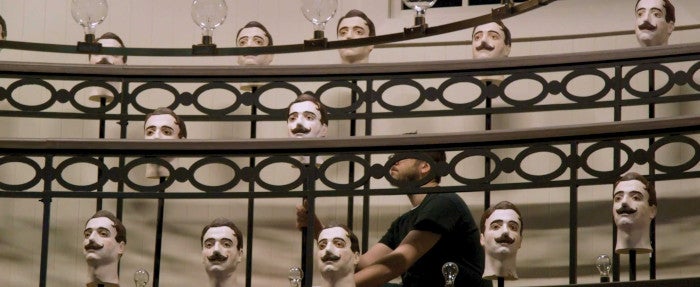
Colin McIlvaine, associate scenic designer on the play Venus at the Signature Theatre, mounted the foam
heads of doctors in three long rows to evoke a medical viewing gallery.
A CREATIVE MISSION
For Suzan-Lori Parks' play Venus, which Signature Theatre mounted in 2017, Cassie Dorland and her team created 98 heads of Victorian doctors staring down at an autopsy in an invasive, creepy way. "I'd been given this challenge," she said. "And it was my job to figure out how we're going to do it. … I was excited."
Photos taken from a signature theatre video on YouTube about the creation of the heads.
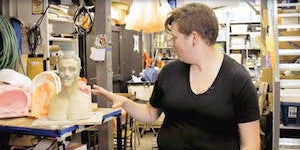 1
1
 2
2
BUILDING TEMPLATES
It took 15 people, including Dorland, working more than four weeks to construct the heads. They first created a foam model (1) and topped it with clay carved into hair, a mustache and other details. The model became the basis for molds (2) used to make the heads.
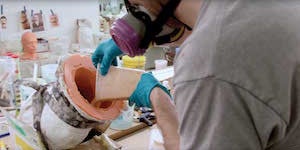 3
3
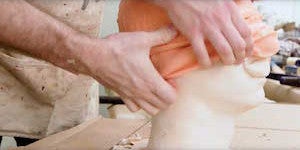 4
4
SLUSH CASTING
One crew member poured two liquids into a mold (3) to create a thin, rigid outer shell that covered the heads, whose interiors were made of foam. Once the coating was set, the mold was pulled off each head (4).
 5
5
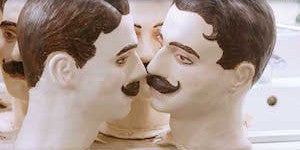 6
6
DETAILS AND DRILLING
Final touches, including precision painting, gave the props an eerily human and Victorian look (5, 6). Then a hole was drilled into the necks and the heads mounted on posts (7, 8). Collars and bow ties came later.
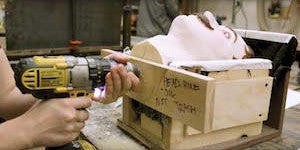 7
7
 8
8





